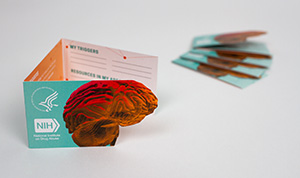About Criminal Justice
More than half1 of people in prison have an untreated substance use disorder, and illicit drug and medication use may increase2 following a period of imprisonment. When it involves an untreated opioid use disorder, relapse to drug use can be fatal due to loss of opioid tolerance that may have occurred while the person was incarcerated. NIDA supports research to develop and evaluate treatment programs to help decrease substance use, address barriers to care, and improve outcomes among people in jail and prison systems.
Looking for Treatment?
Use the SAMHSA Treatment Locator or call 1-800-662-HELP (4357).
Once in a treatment program, even those who are not motivated to change at first can eventually become engaged in a continuing treatment process. More information can be found in the Principles of Drug Abuse Treatment for Criminal Justice Populations: A Research-Based Guide. In support of those who work with juveniles and adults within the court system, including judges, counselors, social workers, case workers, and others, NIDA has created materials and identified other helpful resources that can be used in educating offenders about the science related to drug use, misuse, and addiction.

Drugs & the Brain Wallet Card: This tool is designed for people leaving criminal justice facilities and transitioning back to a less structured environment. To prepare these people to return to their home environment, counselors can customize this tool to help identify triggers that could prompt a drug relapse. It also includes information about resources and helplines. These discreet cards can be kept in a wallet, pocket, purse, or cell phone case for easy access.
- Download the Drugs & the Brain Wallet Card (PDF, 860KB)
- Also available in Spanish (PDF, 860 KB).
The Science of Drug Use - A Resource for the Justice Sector: This resource is intended to give judges, and others in the justice sector, language they can use to explain the risks of drug use, as well as resources that can aid in treatment. The document can be used as a guide when offering someone the wallet card when he or she is leaving the criminal justice facility.
Criminal Justice DrugFacts: This resource looks at the challenges with substance use disorders (SUDs) among people in the criminal justice system, and why treatment and follow up is important for inmates.
References
- Bronson J, Stroop J, et al. Drug Use, Dependence, and Abuse Among State Prisoners and Jail Inmates, 2007-2009. https://www.bjs.gov/content/pub/pdf/dudaspji0709.pdf.
- Western, B, Simes, JT. Drug use in the year after prison. Social Science & Medicine, https://www.sciencedirect.com/science/article/pii/S0277953619303387?via%3Dihub Published June 8, 2019. Accessed April 26, 2021.
Other Resources
- Criminal and Juvenile Justice (Substance Abuse and Mental Health Services Administration)
- Criminal Justice System and Substance Use Disorder Treatment Policy (American Academy of Addiction Psychiatry, May 2015)
- Substance Abuse (Council of State Governments Justice Center)
- Drugs and Crime Research (National Institute of Justice)
- NIDA Justice System Research Initiatives - Provides information about and links to NIDA’s major research initiatives addressing drug use in the context of the justice system.
